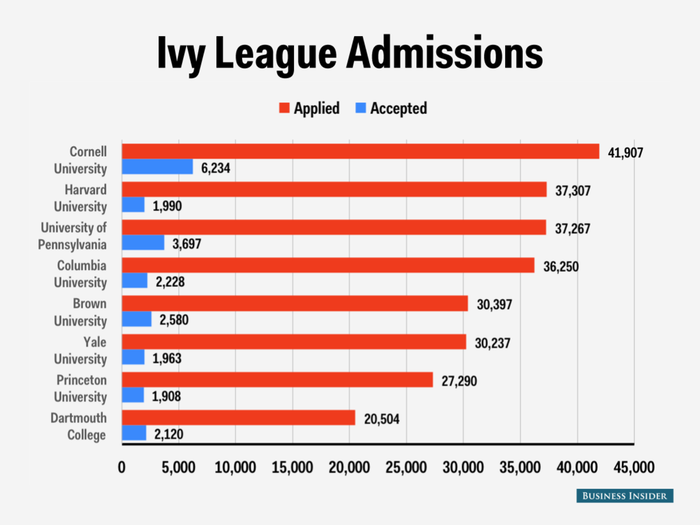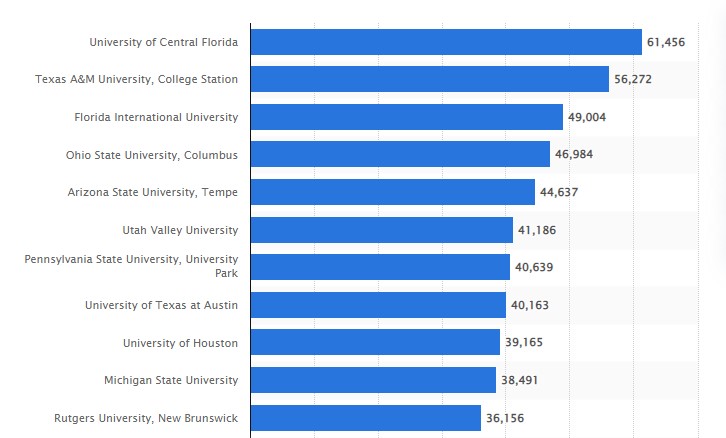Epistemic status: a very rough idea, that I have given relatively little thought to. I am not familiar with the details of how CEA and other organizations prioritize and allocate the support given to universities, so I might be missing very important details. I've only spent about 30 minutes putting together this post, so I might have some errors in here. View this as a rough draft of an idea.
The perception that I have, and what I think is a common perception in EA, is that funding and other support for student EA groups at the university level are mainly going toward "elite" universities: universities that are highly ranked by U.S. News & World Report, which have low admissions rates, and which have high test scores.
These undergraduate colleges[1] generally have only a few thousand students. Eight different EA student organizations at eight different ivy league institutions would be able to reach about 63,000 students[2], or about 8,000 students per organization.

Conversely, if we have eight student organizations at eight well-ranked (top 50) universities in the US with the highest undergraduate student populations, then those eight different EA student organizations would be able to reach about 287,000 students[3], or about 35,000 students per organization. The specific numbers will change depending on which universities are included, but the general idea is simply that maybe we should broaden the focus a bit and get more people, which means more skills. It seems like, despite the talent at ivy league institutions, we might actually end up getting more bang for our buck at less selective universities with higher student populations.

I don't want to imply that we should shift all resources away from Ivy League schools and toward more populous schools, but I do think it might be worth considering adjusting the strategy a little bit. If resources are distributed 80% to ivy league and 20% to other currently, then maybe we should shift it to 60% ivy league and 40% to other. At the least I'd propose finding a couple of populous universities and doing a trial run: create students groups and observe progress for a couple of years.[4]
My rough guess is that the average Harvard student is able to score better on standardized tests and is more well-connected to powerful people than the average Ohio State University student, but I'd also guess that there are more smart enough to make an impact in EA students[5] who are interested in making the world a better place within Ohio State University's 46,000 students than there are within Harvard's 5,000 students.
- ^
In reality most of these famous undergraduate colleges are a single college within a multi-college universities (such as Harvard College, which is only one of the 14 institutions that make up Harvard University), so if we include all the students at the various schools within the university that will affect the numbers. I'm just looking at undergraduate population here, because that is my understanding of where the focus is for EA student groups. However, I might be wrong about this.
- ^
These numbers come from https://www.collegeevaluator.com/ncaa-conferences/ivy-league/enrollment/, and I view then as roughly accurate rather than precisely accurate.
- ^
I got this number by looking at only at universities that are within the top 50 of the US News and World Report, and then summing up the undergraduate populations of the eight most populous: Ohio State University, University of Texas at Austin, University of Florida, Purdue University, University of Illinois at Urbana–Champaign, University of Wisconsin–Madison, University of California-San Diego, The University of California-Los Angeles.

I thought Joseph was trying to identify proxies that you could easily measure at the university level, e.g., by collecting stats from university webpages. Some of the proxies you mention—e.g., "enjoyment of rationalist-y writing"—don't seem to fit this goal, as they seem more targeted to the individual (or are just not already collected and reported at the university level). Granted, some such as IMO medalists and EA alumni representation do seem amenable to such analysis, although the latter seems like it would be a very laggy-metric.
Something like "existence of and participation in speech & debate clubs and related extracurriculars (e.g., ethics bowl, Model UN, Mock Trial)" seems like it would be worth looking into as a candidate.